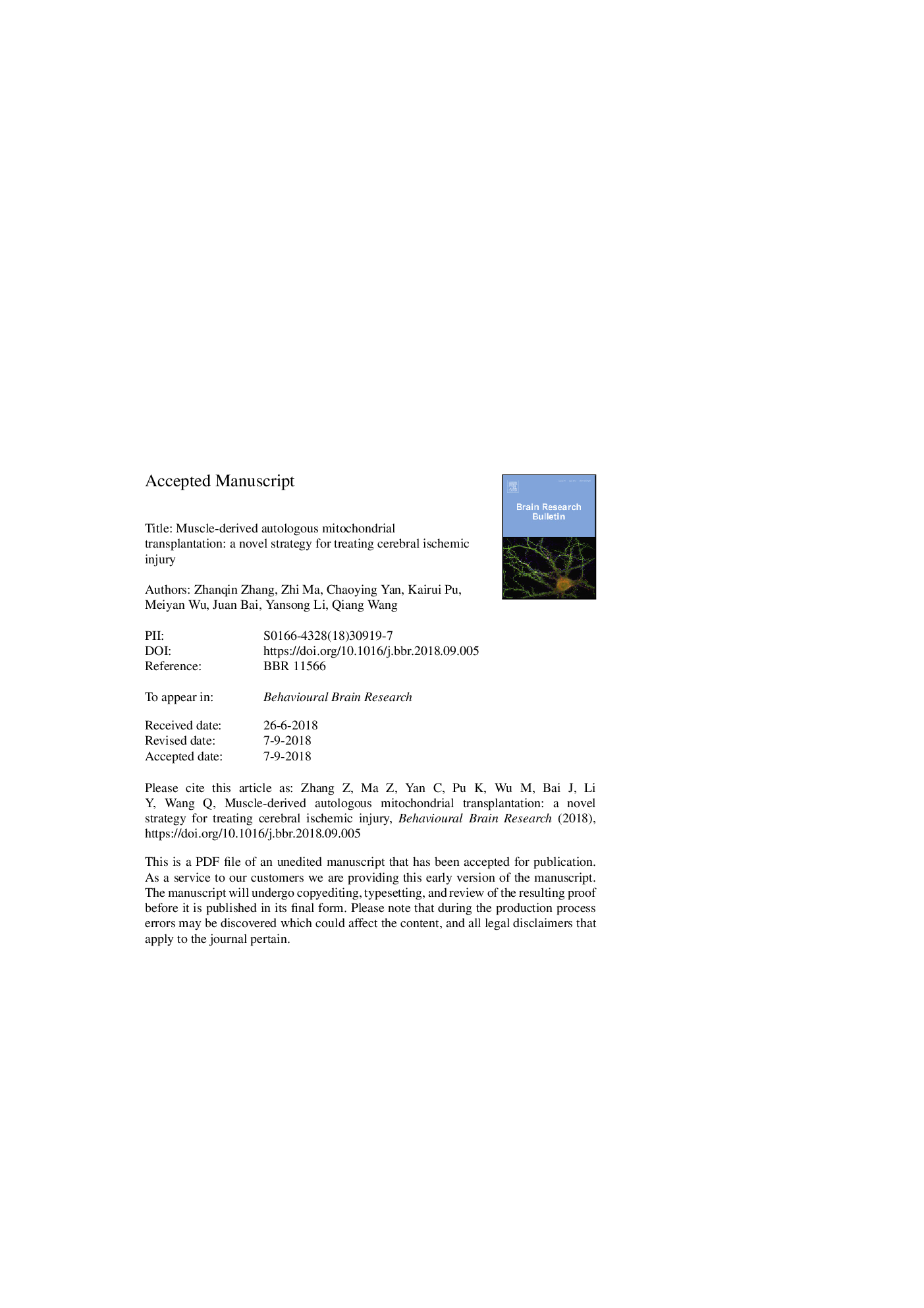| Article ID | Journal | Published Year | Pages | File Type |
|---|---|---|---|---|
| 10138313 | Behavioural Brain Research | 2019 | 37 Pages |
Abstract
The available evidence showed that mitochondrial transfer by releasing the extracellular vesicles containing mitochondria from astrocytes to neurons exerted a neuroprotective effect after stroke. Whether extracellular mitochondrial replenishment could rescue the tissues from cerebral ischemic injury still needs to be explored completely. It was hypothesized that the augmentation of mitochondrial damage after cerebral ischemia could be resolved by timely replenishment of exogenous mitochondria. A stroke model of middle cerebral artery occlusion (MCAO) was used in this study to verify this hypothesis. This study found that the number of extracellular mitochondria increased in rat cerebrospinal fluid after MCAO, and a higher proportion of mitochondria were associated with good neurological outcomes. Following 90-min ischemia, autologously derived mitochondria (isolated from autologous pectoralis major) or vehicle alone was infused directly into the lateral ventricles, and the rats were allowed to recover for 4 weeks. A plenty of infused mitochondria were found to be distributed in the boundary and ischemic penumbra areas. Furthermore, the transplantation of mitochondria reduced cellular oxidative stress and apoptosis, attenuated reactive astrogliosis, and promoted neurogenesis after stroke. Moreover, the transplantation of mitochondria decreased brain infarct volume and reversed neurological deficits. The findings suggested that the delivery of mitochondria through the lateral ventricles resulted in their widespread distribution throughout the brain and exerted a neuroprotective effect after ischemia-reperfusion injury.
Related Topics
Life Sciences
Neuroscience
Behavioral Neuroscience
Authors
Zhanqin Zhang, Zhi Ma, Chaoying Yan, Kairui Pu, Meiyan Wu, Juan Bai, Yansong Li, Qiang Wang,
